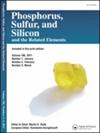Promising way for enhancing light absorption in silicon via silver nanoparticles: experimental and numerical study
Abstract
Silver nanoparticles (Ag-Nps) were grown on the surface of a p-type crystalline silicon (C-Si) substrate using electroless metal deposition. It was found that the Ag-Nps distribution on C-Si was controlled by the silver nitrate (AgNO3) concentrations. Atomic force microscopy observations revealed the formation of a continuous layer at high concentration. In contrast, a distribution of Ag-Nps with a spherical shape was obtained at lower concentration. The samples were also examined by optical microscopy under dark field illumination. The light reflected from Ag-Nps was obtained with different colors. This difference indicates a slight change in particle size. It is demonstrated that a silicon substrate with deposited Ag-Nps shows a significant decrease in reflectance and an increase of the absorption in the region from 200 to 800 nm. Moreover, the behavior of small Ag-Nps while interacting with light (absorbed or scattered light) is theoretically described using the Mie theory based on the Drude model. The introduction of silver nanoparticles on silicon surface is used to improve the efficiency of solar cells by reducing reflection and increasing the light absorption.

 求助内容:
求助内容: 应助结果提醒方式:
应助结果提醒方式:


